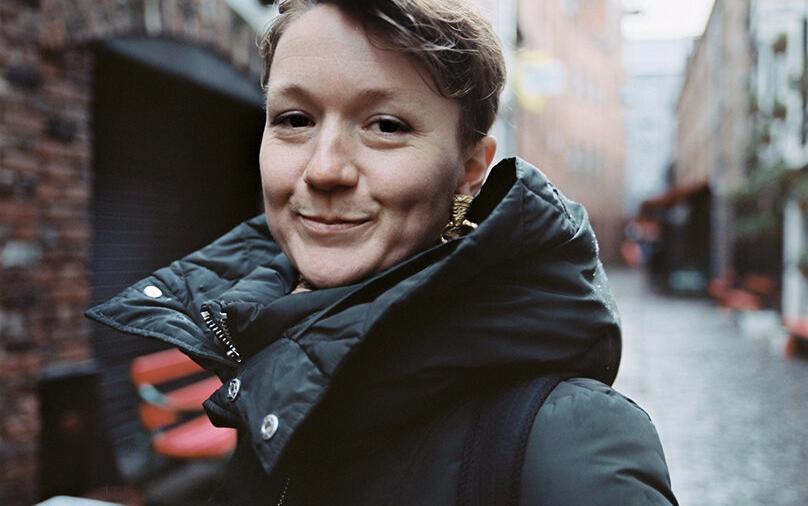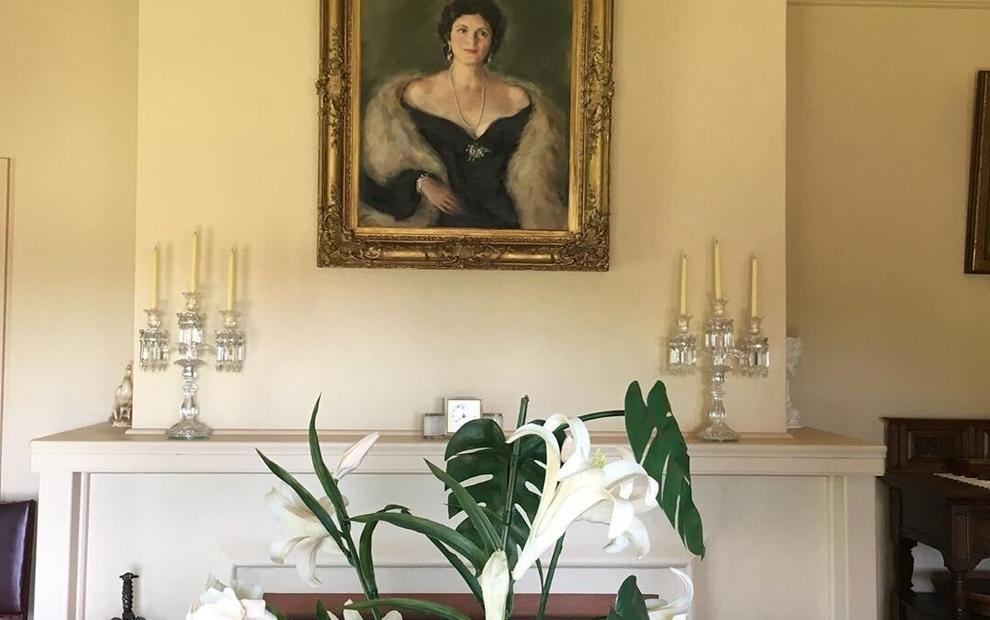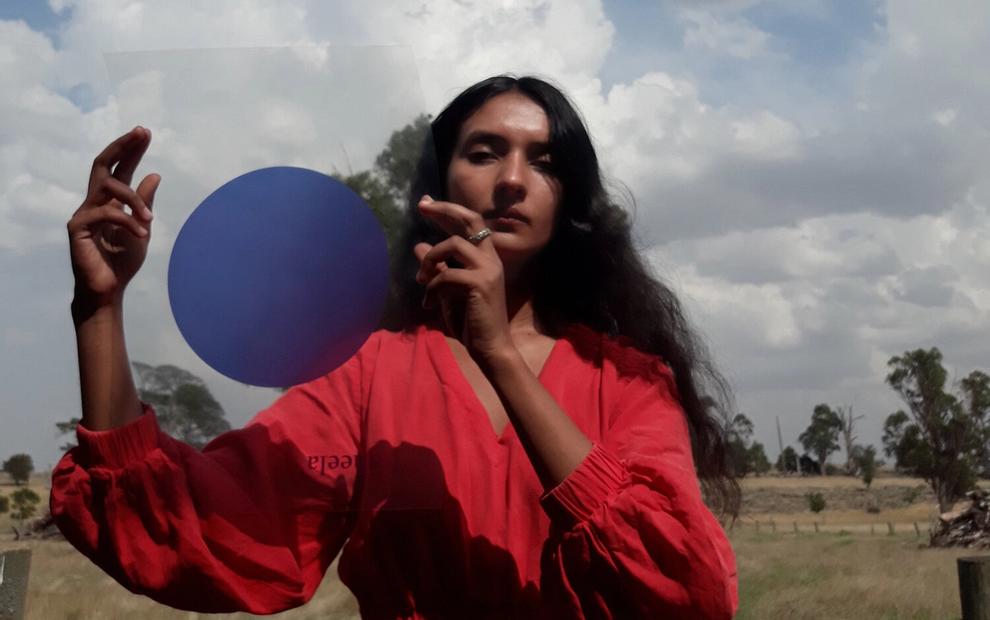

Mooramong Residency: Zoë Barry
Zoë Barry
23 Nov–7 Dec 2020
Residencies are artist-driven and, travel restrictions allowing, take place at Mooramong, a working farm of 4,000 acres that was famously owned by horse racing magnet Donald ‘Scobie’ Mackinnon who remodelled it in 1938 for his movie star wife Claire Adams. Within this inspirational, multi-dimensional setting, invited artists develop a body of work or a site responsive project, and simply undergo a period of structured and intensive research to grow creatively.
The colonial history, architectural flavour, working farm and nature reserve offer a myriad of possibilities for tangential artistic engagement. BLINDSIDE and the National Trust are particularly interested in projects and research surrounding issues of conservation, sustainability, settlement histories and pre-colonial histories specific to the site.
This year we have invited composer Zoë Barry; writer Bonny Cassidy andvisual artist Pia Johnson to undertake solo residencies at Mooramong. If unable to travel, residencies will be undertaken at the artists’ homes in regional Victoria.
The residency, on Wadawurrung country, allowed me time and space to consider what it means to be a white settler listening to country, and to explore making work as an act of acknowledgement of country. I took field recordings, listened to them repeatedly for days on end, and created sound 'studies' by disturbing them, looping them, subtly changing them, and adding multiple layers of cello, in an attempt to reflect how I was listening to the sounds, and questioning my listening practice. Constant bird song accompanied our time at Mooramong, and I wanted these complex calls to become deeply familiar to me. I chose the calls of several native and introduced species, and using cello, explored ways to expand the calls into durational vibration, responding to a desire to slow everything down and to sit within infinite sound. As I made the sound pieces, studies in listening, I noticed what I was drawn to, how I was listening, what I was listening to and for, and what I might be consciously and unconsciously dismissing. I reflected on the words I was using to describe my compositional approach, and what was underpinning my choice of language. The residency afforded me time to research, learn some Wadawurrung language, and be guided my those words as I walked the property every day, and to question, question, question how and why I make sound.
I live on Taungurung Country, Kyneton, and this residency has afforded me two weeks on Wadawurrung Country.
How do I, as a white settler, listen to country?
What do I listen to?
What am I listening for?
What do I notice, and what do I unconsciously or consciously miss/dismiss?
I wanted to make work in response to these questions, and to the notion of making work in response to Acknowledgment Of Country, as an act of Acknowledgement of Country. I wanted to make work informed by my identitying as a white settler.
On my first morning, I sat under the apple tree in the back garden of the workers cottage. I was sitting and reading. As I finished reading and put the paper down, a rush of bird song and wind rose to meet me, now that I wasn’t distracted. It suddenly became clear to me that my time at Mooramong would be about listening. The wind and the birdsong told me what to focus on, which was quite a different direction to what I had been planning.
I spent the 12 days researching and experimenting. I learnt some Wadawurrung words, and they then guided my gaze, my interaction with the landscape. I noticed the words on the signs around the property, from the residence, the nature reserve and the farm. I would make ten minute field recordings at different times of day, in different parts of the property. I listened back to them intensively, over and over, and reflected on what I was noticing in the recordings, and reflected on why I was noticing these particular things. I described the process to myself, then reflected on my choice of language.
I spent a week listening to one 10 minute recording in particular - a week listening to the same recording, over and over.
I began experimenting with the field recordings, editing them, interrupting them, disturbing them, looping them, bringing out the patterns and melodies I was hearing in the sounds, and adding layers of cello based on what I was hearing in the recordings, playing with recreating the thought processes I was having whilst listening to the land.
I was drawn to take the bird calls I was hearing in the recordings, choose a few birds, and expand each one’s song into infinity - a desire to sit within the song, to the point where it becomes all consuming. I transcribed the bird calls and played them on cello, recording myself playing them over and over, gradually slowing them down on each repeat until every tiny detail of the melody and rhythm had been stretched out to durational vibration.
I noticed what words I was drawn to that were guiding my composition - surrender, render, succumb, yearn, and looked into their historical meanings. I was particularly interested in “to render” to guide my composition process: to give back, melt down, extract by melting, restore, to do a service for another, impart, performance of, copy or version of, to administer, to cause something of someone to be in a particular state, to change words into a different language (Merriam Webster Dictionary).
I was captured by “to extract by melting” - that is what I was doing to the birdsong though my ultra-slowing of the bird melodies, and noticed the language derived from capitalist, extraction economy language.
I created 6 pieces that span 50 minutes. Five of the pieces are based on bird calls - Grey Shrike Thrush (two pieces), magpie and Common/European Blackbird. The bird calls were kindly identified by a scientist visiting the property from the Department of Environment, Water and Land management. One piece is drawn from the expanded bird calls looping together as a mass of vibration. The other piece is taken from the first field recording I made, and the cello.
The pieces are exploring the process I went through - my questioning, my moments of discomfort and ease, knowing and unknowing. The pieces are designed to be listened to very closely, and the reward only comes from focussed listening. The pieces challenge the listener to listen closely, and to be patient. The pieces are provocations, designed to invite the listener to reflect on and question their relationship to country, and their listening practice. The pieces are designed to be heard in headphones or speakers, with the listener lying down or reclining (“succomb - lying down under”).
The time at Mooramong to research and make was significant for me. It allowed me to spend time experimenting with a new approach to composing, and to begin to investigate more deeply what it means to make work as a white settler on stolen land. I imagine this draft will be expanded upon to make a durational work that could be experienced in a range of settings.
I extend my thanks and gratitude to BLINDSIDE, the National Trust, the staff at Mooramong, my fellow residences Bonny and Pia, and the traditional owners and custodians of the land, the Wadawurrung.
- Zoë Barry, December 2020
Since 2016 Blindside has facilitated a number of residency projects that foster engagement with regional Victoria, encouraging artists to grow connections between their practice, the environment and community.
Blindside was pleased to partner with the National Trust to facilitate the Mooramong Art + Research Residency in 2020.
This residency program takes place on the land of the Wadawurrung people of the Kulin Nation. We recognise that sovereignty was never ceded - this land is stolen land. We pay respect to Wadawurrung Elders, past, present and emerging, to the Elders from other communities and to any other Aboriginal or Torres Strait Islanders who might encounter or participate in the program.
Zoë Barry is a composer, cellist, sound artist, performance maker and educator, creating across site-specific installation, galleries, film, immersive theatre, the digital space and chamber music. She is drawn to creating experiences that invite the audience to slow down into the intuitive. Zoë creates deeply moving immersive sound, music and performance experiences. Her practice is devised, collaborative, relational and emergent. Using score, sound design, verbatim text and live performative elements, her work explores liminal spaces, disturbance, atmospherics, intuition, slowness, and the amplification of lost, quiet and marginalised voices.
Recent gallery works include CCP’s Hypnotic Offerings, responding to the work of Warren Baker, Bendigo Gallery’s Gothic Beauty, Stockroom Gallery’s Feast, and Kyneton Contemporary Art Triennial, collaborating with visual artist Georgie Mattingley. Large scale sound works include Back To Back Theatre's Theatre of Speed's 4 hour live sound installation Mountains Rise, and the Federation Handbells' Wonderlands for Melbourne Recital Centre. Recent digital works include Threshold's Mountain Goat Mountain, and Sandpit and Google Creative's The Highly Filtered Picture of Dorian Gray. Residencies include Bundanon Trust, Labyrinth Music (Crete), the Lucid Art Foundation (CA), Historical Damsite (NM), and Artshouse' CultureLAB 20/21. Zoë is a member of The Letter String Quartet, RMIT's CRiMP Lab, and is Director of instrumental program Harmony in Strings, delivering trauma informed music pedagogy for students facing significant disadvantage.
Zoë lives by the Campaspe River in Kyneton, on the land of the Dja Dja Wurrung, Taungurung and Wurundjeri Peoples, the Traditional Owners and custodians of the land. She pays her respects to Elders past, present and emerging.
Martina Copley is an artist and writer whose practice explores the poetics of compositional processes. She has worked with Sutton Projects, Propane, Bus Projects, RMIT Project Space, SEVENTH, West Space, City and Docklands Libraries, Melbourne Festival, and Liquid Architecture. She has co-produced two artist books and her writing (often with live readings) has been published by the Expanded Writers Collective, Runway Journal, no more poetry, the Australian Centre for Contemporary Art (ACCA), and Bloomsbury Academic. Martina is Chair Artistic Director at Blindside and lectures in contemporary art and writing at RMIT University, the Victorian College of the Arts, University of Melbourne and La Trobe College of Art & Design.
martinacopley.com

Related

23 Nov–7 Dec 2020
Mooramong Residency: Pia Johnson
Pia Johnson

23 Nov–7 Dec 2020
Mooramong Residency: Bonny Cassidy
Bonny Cassidy

3–22 Feb 2020
Mooramong Residency: Anna May Kirk
Anna May Kirk

3–22 Feb 2020
Mooramong Residency: Manisha Anjali
Manisha Anjali
